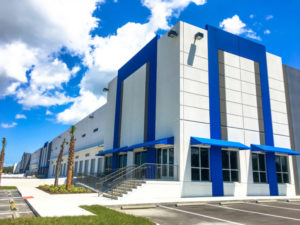[fusion_builder_container hundred_percent=”no” hundred_percent_height=”no” hundred_percent_height_scroll=”no” hundred_percent_height_center_content=”yes” equal_height_columns=”no” menu_anchor=”” hide_on_mobile=”small-visibility,medium-visibility,large-visibility” class=”” id=”” background_color=”” background_image=”” background_position=”center center” background_repeat=”no-repeat” fade=”no” background_parallax=”none” enable_mobile=”no” parallax_speed=”0.3″ video_mp4=”” video_webm=”” video_ogv=”” video_url=”” video_aspect_ratio=”16:9″ video_loop=”yes” video_mute=”yes” video_preview_image=”” border_size=”” border_color=”” border_style=”solid” margin_top=”” margin_bottom=”” padding_top=”” padding_right=”” padding_bottom=”” padding_left=””][fusion_builder_row][fusion_builder_column type=”1_1″ layout=”1_1″ spacing=”” center_content=”no” link=”” target=”_self” min_height=”” hide_on_mobile=”small-visibility,medium-visibility,large-visibility” class=”” id=”” background_color=”” background_image=”” background_position=”left top” background_repeat=”no-repeat” hover_type=”none” border_size=”0″ border_color=”” border_style=”solid” border_position=”all” padding_top=”” padding_right=”” padding_bottom=”” padding_left=”” dimension_margin=”” animation_type=”” animation_direction=”left” animation_speed=”0.3″ animation_offset=”” last=”no”][fusion_text columns=”” column_min_width=”” column_spacing=”” rule_style=”default” rule_size=”” rule_color=”” hide_pop_tinymce=”” class=”” id=””]
Director of Industrial Properties
There’s a revolution brewing in the industrial and retail segments of commercial real estate, soon to be in full swing in every tertiary market in the United States. As consumers, we all seem to be enamored by the ability to search online and purchase an item from the convenience of our computers or smart phones and have it delivered to our homes in a few days instead of having to go to a store and fight the crowd, the weather, and the possibility of the item being out of stock. This has become the shopper’s norm, so much so, that it is reported that companies such as Amazon have grown around 30% per year since 2011 and nearly 15% – 25% of everything sold is being purchased online and delivered to the home. This trend is ever-expanding, with many new products being offered for delivery to the comfort and security of our homes. Everything from a monthly supply of toilet paper to a one-time delivery of a storage shed for your backyard— and everything in between, including the kitchen sink and fresh food to cook.
The dynamic above is rapidly changing, as technology and the demand for instant gratification of the consumer increases.
In many larger urban markets, it is now possible to have many of these items delivered the same day as ordering, sometimes within two hours of placing the order. This revolution is rapidly expanding to the smaller suburban and even rural markets of our country.
E-commerce is changing the way we shop and also the method in which the products are warehoused, distributed, and finally delivered to the consumer. The term “last mile delivery” has become a common term once only used at third party logistics companies.
As we speak, there are massive distribution fulfillment centers being constructed all across America. These are warehouses as large as one million square feet with highly automated inventory systems ready to receive and push product out the door at a record pace. Amazon has several of these strategically spread throughout Florida.

The next step in the process is why locations like Brevard county and similar size locations come into play. With the demand for same-day delivery becoming a way of life, delivery from a warehouse two or more hours away is difficult and nearly impossible to achieve. It is crucial that somewhat smaller hubs of (50,000SF – 200,000SF) “last mile” distribution fulfillment warehouses become available in the geographic and demographic “center” of local populations in order to keep up with the demand and increase profits by lowering the cost of delivery. The highest cost in delivery is labor, which equates to about 60% of that cost. The so called “last mile” is currently the most inefficient part of the equation contributing to as much as 28% of the total delivery calculation. It is imperative for these companies to improve this part of the equation to be competitive. The idea of building 50,000SF to 200,000SF Class A warehouses in tertiary markets would have probably never crossed the minds of developers in years gone by, but times—they are a changing.
E-commerce companies are expanding with major distribution centers and smaller hubs closer to the consumer to get the product delivered today while improving the bottom line. The demand for strategically located, larger warehouses in smaller markets is growing rapidly all over America. Repurposing an older warehouse or a dark big box retail store in a superior centric location may also become a trend for those municipalities that would consider re-zoning a building to accommodate a vibrant new industry in an otherwise eyesore to the community.
With the current high occupancy of our market’s industrial warehousing product, there could be an opportunity waiting for a build-to-suit option for strategically located industrial properties and market-wise developers.
If you want to learn more about market trends for industrial, retail or office segments of commercial real estate in East Central Florida, contact the seasoned professionals at Lightle Beckner Robison, Inc.
[/fusion_text][/fusion_builder_column][/fusion_builder_row][/fusion_builder_container]




